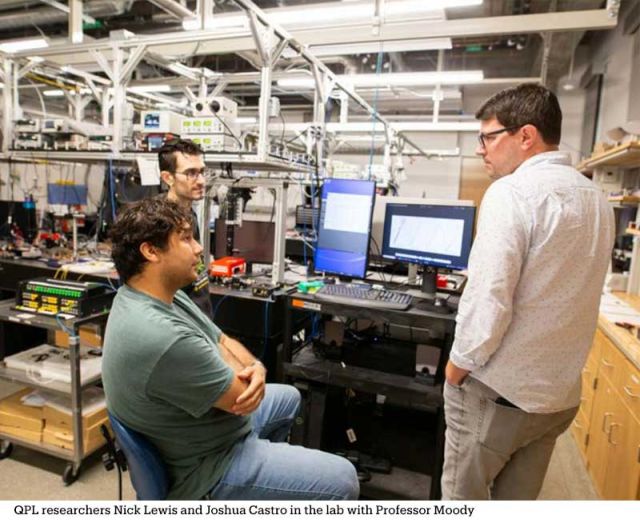ECE Research Initiative: Quantum Photonics Lab (QPL)
ECE Assoc. Prof. Galan Moody's Quantum Photonics Lab addresses open challenges by developing integrated photonic technologies—the optical analog of microelectronics

Excerpt from The ECE Current 2023-24 Newsletter
Over nearly a century ago, quantum mechanics changed how we view the world around us. Since then, many transformative technologies have relied on quantum phenomena, from the transistor that powers all our electronics and the laser that drives global connectivity to atomic clocks that enable precision timekeeping and GPS synchronization. We are now experiencing another quantum revolution in which new technologies leverage entanglement between quantum objects—what Einstein called “spooky action at a distance.” Recent demonstrations of so-called Quantum 2.0 technologies include small-scale quantum computers, quantum communications links, and quantum-enhanced sensors. Yet, many open challenges remain: How far can we push the performance of quantum bits (qubits)—the fundamental building block of all Quantum 2.0 systems? How do we go from a few qubits to thousands or millions of entangled qubits needed for quantum computing? And how can we leverage quantum mechanics to sense the world around us in ways that aren’t possible with classical devices?
In the Quantum Photonics Lab (QPL), we address many of these open challenges by developing integrated photonic technologies—the optical analog of microelectronics. We use the photon as our building block—quantum information can be encoded, processed, stored, and transmitted using different properties of light itself, such as its polarization or frequency. Photons are ideal carriers of quantum information: they interact weakly with their environment enabling room temperature devices; they carry information at the speed of light; and we can leverage existing integrated photonic and telecommunications fiber optic infrastructure.